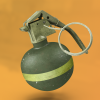This year, CS: GO will turn seven. In that time, a lot has changed in the game, but some of the requests from the Valve community are being responded to very slowly.
The server “128 times per second” update
One of the main (most frequently seen) requests of the community is to double the “tick rate”, that is, the number of updates on the server every second. This is an important parameter that affects almost all aspects of the gameplay, from hit counts to grenade throws.
Third-party platforms, ESEA and FACEIT, as well as official servers for Chinese players, work using exactly that “tick rate”. Western players have to be content with a “tick rate” of 64. Note that it’s not so expensive to double the number of updates on official servers, but Valve, apparently, is not willing to do that.
A new engine
CS:GO works on the same engine as Half-Life 2, which was released in 2004: Source.
During this time, the engine has been repeatedly updated and improved, but it has fundamental parts that are difficult to replace. For example, Havok is responsible for physics, and it was “helping” Source from the moment of its appearance.
The new engine is an excellent reason to fix all the annoying nuances of CS:GO in one fell swoop and improve what we have. Graphics, effects, fast alt-tab, better sound, less latency, higher performance. In Dota 2, when switching to a new engine, players were introduced to its advantages on a special page and most of the advantages of Source 2 would not hurt in CS:GO.
There is only one problem. In Source 2, which runs Dota 2 Reborn, Rubikon is in charge of physics. Most likely, after the move and in many respects because of other physics, the game will feel differently. For example, some of the spreads will disappear, another part will change, but new options will appear.
It is impossible to say whether Valve is engaged in transferring CS:GO to a new engine, but there are not so many prerequisites for this. The popularity of this shooter only grows with time, which means there is no point in making adjustments.
New operations
Operations are to-be-paid-for DLCs for CS:GO. Having paid for the “ticket”, the player gets access to community cards, a special medal, various tasks, and skin collections. The operations themselves last several months and have no effect on the competitive part of the game.
The last operation ended 14 months ago. Since then, the game acquired new content, which is the interface Panorama, PP MP5-SD, and the royal battle mode. In addition, the game is regularly replenished with fresh skins. But this is not a complete replacement of the operation.
The community has missed these so much that on the subreddit of the game, concepts of operations regularly appear, including a list of maps, skins, and even modes. All that Valve needs is to just select a small team that would bring to life one of the ready-made concepts.
Feedback
The development team practically does not communicate with the game community. Because of this, some of the statements from Valve look very strange. For example, almost two years ago, developers “temporarily” lowered the price for the Negev and added it along with R8 to the competitive mode.
Obviously, two years is not “temporary.” But the developers are silent and therefore the community is not clear on what is happening.
Is the Negev machine gun still being tested?
Will there will be new changes to the machine gun soon?
Will it be rolled back to the old version? Or is this the final form?
These questions could have been easily avoided if Valve communicated with the players in any other way than through memes on Twitter.











